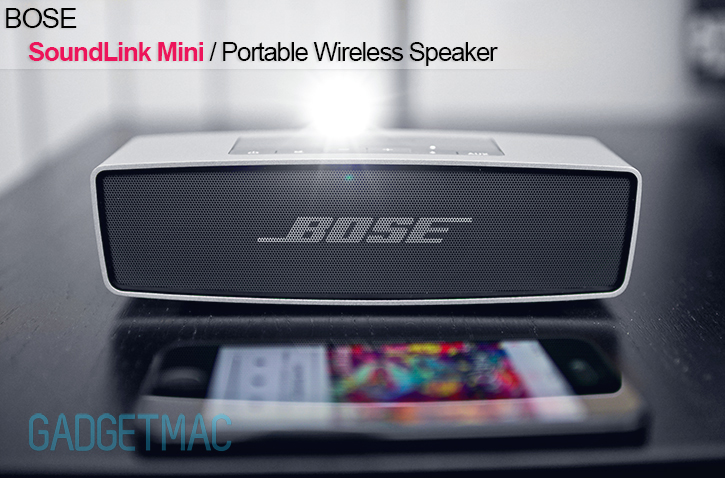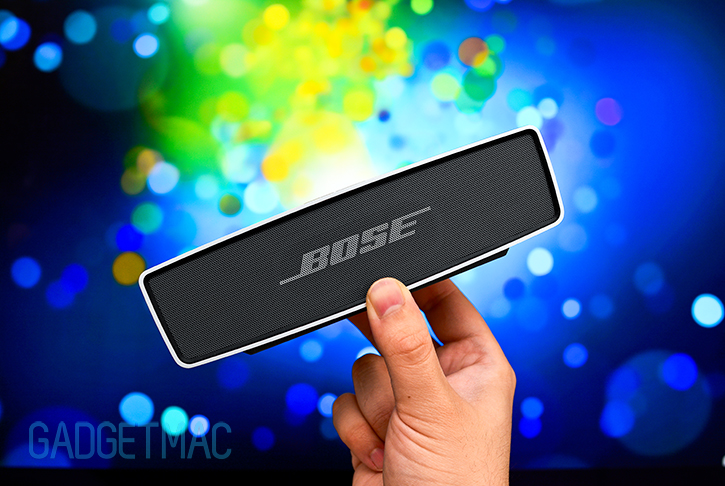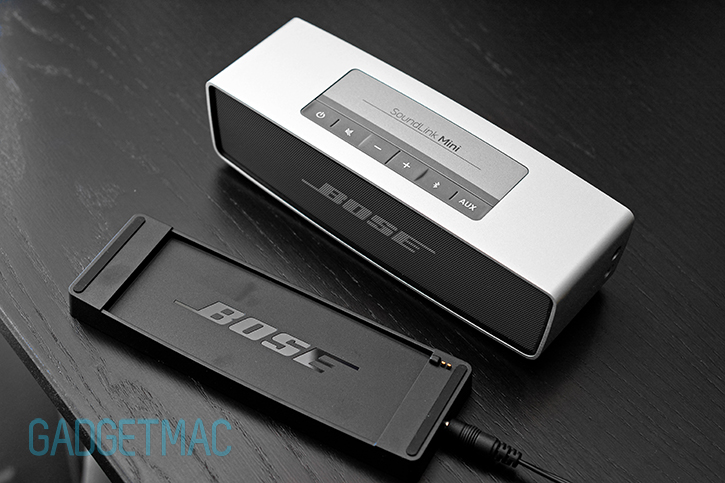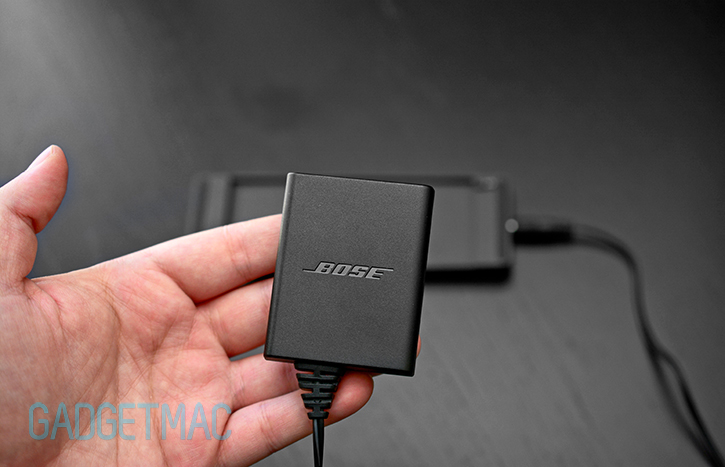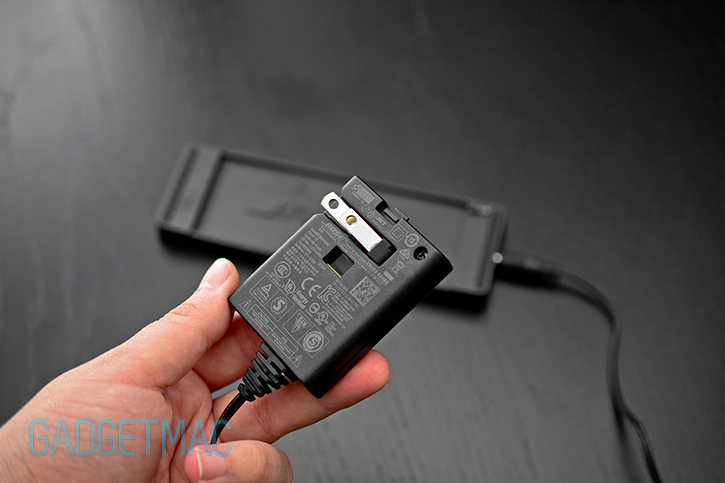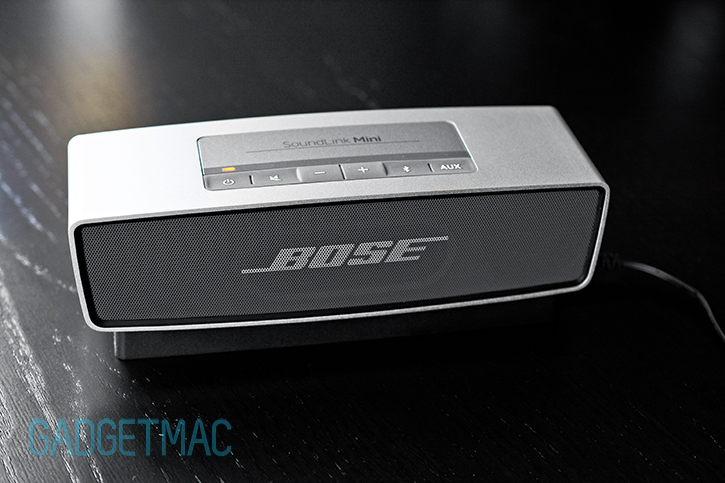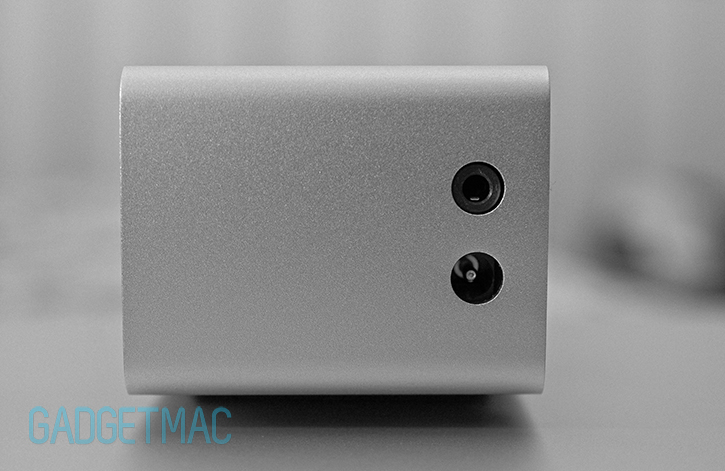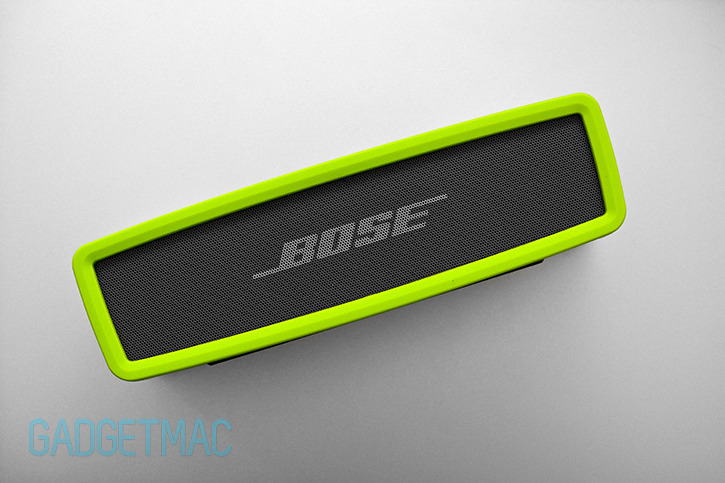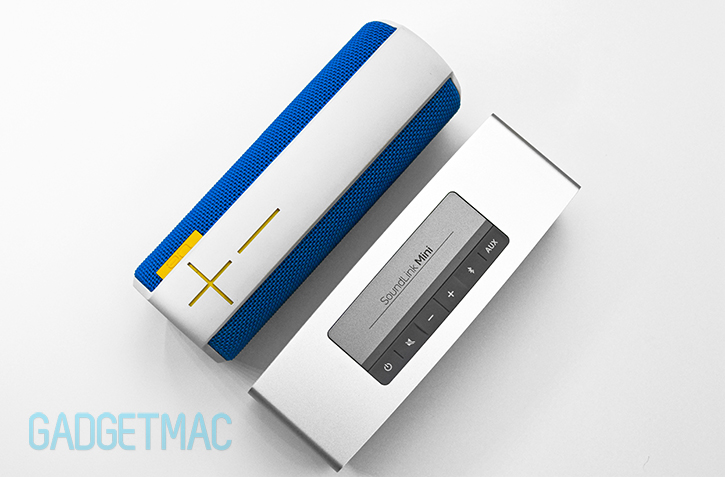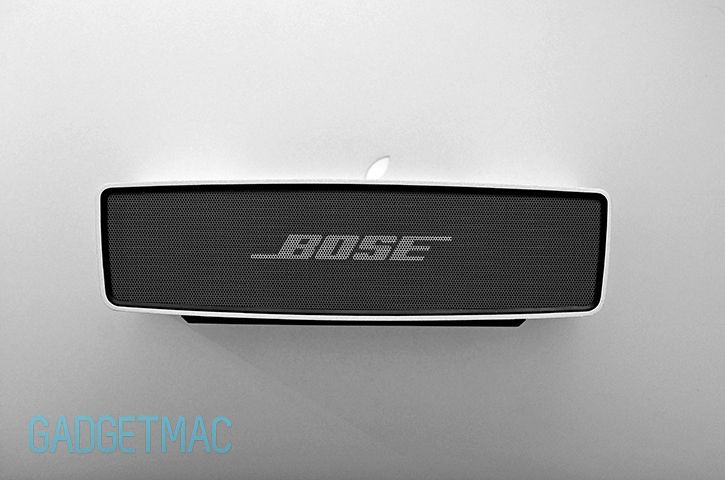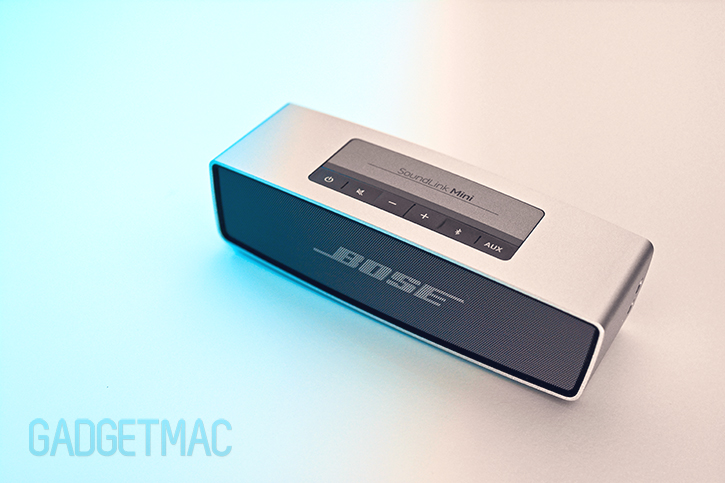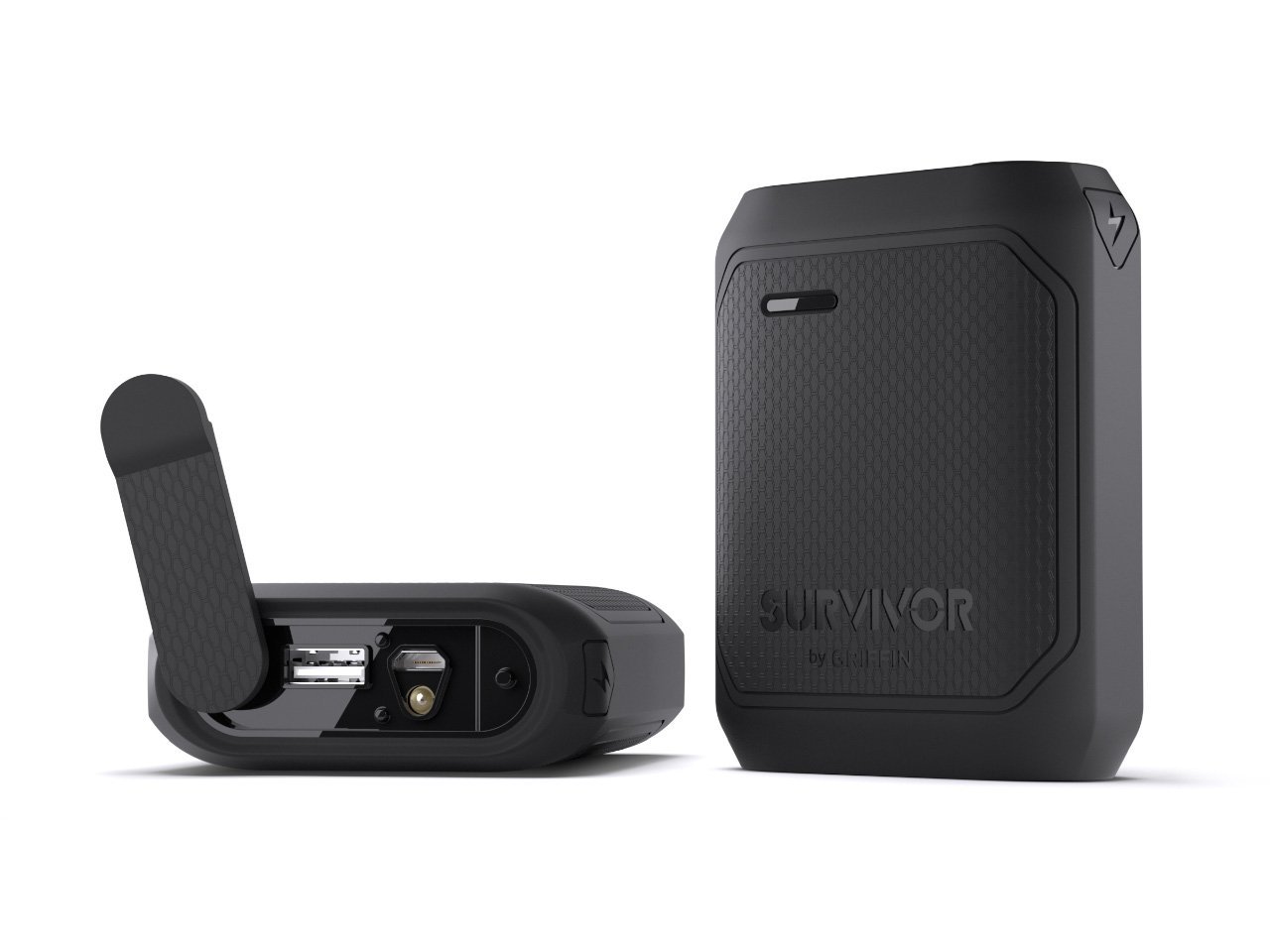Bose SoundLink Mini Review
/High-end speaker harbinger Bose, has recently released a much more compact and portable version of its successful $300 SoundLink wireless speaker appropriately named the SoundLink Mini. It's Bose's smallest wireless Bluetooth speaker that competes against offerings from some of the most notable brands in the ferociously competitive portable speaker category. The SoundLink Mini packs innovation, proprietary audio drivers and dual-opposing passive radiators that recreate Bose's signature deep sound beloved by most if not all humans. And if you've already seen our guide for the best wireless portable speakers, well then we've spoiled it for you. But if you haven't cheated already, then we've got a great comparison and review lined up just around the break. How does the SoundLink Mini compare to our top rated portable wireless speaker, and more in the full review down below!
Where Bose's SoundLink tries its hand at rivaling Jawbone's Big Jambox in the not-so-portable portable wireless speaker market, the new SoundLink Mini is an ultra-compact version of it that really looks nothing like its bigger brother. You can literally take it with your everywhere you go and even slip it into your pocket, if you aren't wearing tight jeans that is. The SoundLink Mini is dwarfed by the original, but even so it doesn't disappoint when you fire it up as you shall come to know later in the review. It retails for $200 which puts it face to face with Ultimate Ears' UE Boom as well as the Beats Pill - two of the most talked about and relevant portable speaker players around. Somewhere in-between is the overpriced and over-hyped Jambox which a lot of people seem to like, presumably from a style standpoint no less. But that has changed with the introduction of some amazing alternatives which we've reviewed in the past; notably the JBL Flip.
Best built portable speaker award should go to the SoundLink Mini
Surrounded by a refined aluminum unibody construction and weighing 1.5 pounds, the SoundLink Mini has a phenomenal build quality that screams top notch quality. It is actually the best built portable speaker we have ever tested. Might it be due to its aluminum unibody or simply its dense internal hardware, it makes no difference the moment you pick it up for the first time. It is then when you feel happy knowing that the $200 you spent nearly paid off just by how incredibly well put together the SoundLink Mini feels when picked up. The solid, brick-like build quality is just as impressive as one of Apple's unibody Macs, iPhone and iPod touch.
Flanking this wide, streamlined aluminum unibody design are the SoundLink Mini's dark metal perforated speaker grilles which give the speaker its almost architectural and industrial design language that is really beautiful both up close and from far away. Partly influenced by Bose's desktop computer speakers, the SoundLink Mini's build quality and construction are its design; and a really good looking one at that. For a speaker that measures only 7.1-inches across by 2-inches in height, the SoundLink Mini is a tightly packed device you could substitute for a petit corner stone.
At the top of the device is where a series of rubberized button controls take center. You've got access to the usual set of volume, mute, power and Bluetooth pairing buttons as well as an auxiliary audio input switch. The rest will be left to the audio source device you've paired the SoundLink Mini to. A bright multi-colored LED dot above the Bluetooth pairing button will shine white indicating the unit is in use and paired. It'll turn blue in a pairing process. Another one like it is located above the mute button. The power button has a battery icon instead of a dot which changes colors as well. I don't think Bose did a very good job with this control panel however. That large sticker-like area with the name written on it does ruin the SoundLink Mini's sleek and otherwise minimalist design in a way.
Nitpicking aside, surprisingly the SoundLink Mini cannot be used to answer an incoming call nor be used as a speakerphone. Music will be paused once a call comes through if you're using a smartphone so you could answer using your handset itself.
The SoundLink Mini's third best asset is its charging cradle. Unlike most if not all portable speakers, the SoundLink Mini actually includes a charging dock that will charge it whenever you set it on top of it. The base isn't anything special and made out of lightweight plastic. It has rubber feet underneath to keep it from sliding around as well as around the top surface, but other than that it doesn't seem to match the quality of the SoundLink Mini itself in any way.
Now it isn't wireless inductive charging, but you can say it works very similarly in that you simply place the speaker in its dock and charging begins. As for the connection, it does use what all cordless home phones use to charge - meaning that you can only place the speaker one way on the charging dock unlike the now more popular wireless inductive charging methods devices like the Nokia Lumia and Galaxy S4 utilize. It is worth noting that when charging, the SoundLink Mini can still be used if there were any doubts about it. The charging cradle/dock serves its purpose really well I'll be honest, and it makes using a wireless rechargeable speaker that much more effortless and convenient. And these are also all that you're going to find inside the packaging apart from literature.
But what isn't so convenient is the fact that the SoundLink Mini doesn't use USB to recharge its battery. Fortunately, you can leave the charging base at home as it unplugs from the wall adapter which you can plug directly into the speaker itself to charge it that way. Then again, not being able to charge the SoundLink Mini using a computer is slightly limiting. Bose does make up for the lack of USB charging capability by using an ultra-compact and slim wall power adapter that features collapsible prongs to save space. Great for when traveling. I was really happy to see such a small form factor on this adapter in comparison to some of the bulky variates out there that never fit quite right into storage compartment.
Whilst we're on the topic of charging - the SoundLink Mini's battery life is terrific. 7 hours of wireless Bluetooth audio streaming which isn't as remarkably awesome as the UE Boom's 15-hour runtime, but still impressive nonetheless. You also won't find the same polished support the UE Boom has for iOS devices such as little battery status indication and audible battery percentage features, so in that regard the SoundLink Mini is as conservative as it looks. With the SoundLink Mini's battery status LED on top, you'll have to guesstimate the remaining amount of juice left, if at all. Other than changing color from green to yellow and finally an alarming red denoting an approximation of the remaining battery percentage, you'll just have to keep guessing. Oh how do we dislike such battery indications.
If we look at the bottom, we can see that there is actually a micro-USB port but oddly enough it is recessed and well, placed underneath the speaker! That, plus it did not work when we tried to use it to recharge the SoundLink Mini using a few micro-USB cables. I'm sure that this is used for warranty service only or maybe even firmware updating. Other than that there's a large rubber surface used for traction as well as the golden charging connection points used for the charging dock.
On the right hand side is where the SoundLink Mini features a charging input for use with the included detachable charging cable, and a 3.5mm auxiliary audio input which you can use to connect practically any audio source using a wired connection - a cable isn't included though.
You can cover the SoundLink Mini's pure aluminum goodness with some of the optional accessories Bose wants you to purchase as if it were a smartphone. Bose's Soft Cover, an Apple Bumper-like case made to protect the SoundLink Mini's beautiful aluminum build from scratches and dings. The Soft Cover is basically a case that fully covers the SoundLink Mini all around leaving an opening for the top control panel and bottom rubber surface. And yes, you can dock the SoundLink Mini in its charging cradle while encased. Nice thinking there Bose.
It's made out of flexible clear silicone and slightly harder yet still flexible colored plastic front-facing trim which ends up looking like a bumper type of a case for a speaker. As cool as it is, it'll run you $25. But it does its job in protecting the SoundLink Mini as an added layer of ruggedness which is awesome if you're actually going to toss this into your bag as Bose doesn't include a protective carrying case.
The Soft Case is available in green and blue hues as well as in a solid orange color which fully covers the SoundLink Mini hiding its silver aluminum body. Overall, the Soft Case offers a really nice way of not only protecting your investment, but also a chance to customize it with a touch of vibrant and contrasting color. It's also a unique concept to the SoundLink Mini where with other portable speakers you're bound to only your initial choosing of any one color or style at the time of purchase.
Compared to the $200 UE Boom which we think is a very close and worthy contender as well as the testing benchmark for this review, the SoundLink Mini isn't any bigger and even thinner thanks to its rather flatter design. Suffice it to say that both of these speakers can be easily carried around without taking up much space.
The thing that matters most, sonic performance, should be first on your list when purchasing a portable wireless speaker. Size comparisons put off to the side, the SoundLink Mini is a powerful little bugger. Its size says absolutely nothing about its true capability. This thing can move air and not move an inch doing so. Put your hand right in front of that metal grille and you'll feel the air vibrate on top of your skin. I'm talking of course about the SoundLink Mini's bass performance.
You'd never think such a compact speaker unit can produce such incredibly thick bass. But it does, and it wakes you up the moment you hear it start to play. Having tested many solid wireless speakers up to the $300 mark, the SoundLink Mini hands down has the best bass performance. You'd think the equally prices Beats Pill would be the king of bass, but surprisingly enough it doesn't even come close.
The impressive thing about the SoundLink Mini's capability of producing thumping lows is that it does so without sacrificing the rest of its audio spectrum. However and with that being said, the SoundLink Mini's midrange in comparison to the UE Boom's midrange does end up sounding a little held back as a result. Putting the two against each other, we found that the UE Boom lacks that bottom low-end that the SoundLink Mini introduces in its sound signature which is really rich and full of warmth due to that. That puts the UE Boom on a side that's heavier on treble which means that highs are the center point in its sound signature. With that being said though I think both speakers perform really well in their respective audio characteristics.
Other than that, the SoundLink Mini's highs sound just as clear and natural as they do on the UE Boom. Plenty of bass and clearly pronounced vocals and highs put the SoundLink Mini at a slight advantage over the UE Boom's incredible audio performance, and that's really a big step up in terms of a rich audio experience that we haven't really heard until Bose introduced the SoundLink Mini. Mids could have used more forwardness in their presence, but overall I think the sonic performance here lives up to the Bose name as well as the SoundLink Mini's $200 price tag.
Inside, the SoundLink Mini has an identical speaker arrangement to the UE Boom. Two dual-opposing passive radiators sandwiched in-between two dynamic audio drivers. But even so, Bose has been able to squeeze more out of those passive radiators compared to the UE Boom it seems. At the highest volume level, the SoundLink Mini is able to deliver clear and clean sounding audio without any distortion which is very impressive. So does the UE Boom actually, and in fact, it's a little louder in comparison than the SoundLink Mini but not my a considerable amount. Nonetheless, the SoundLink Mini can fill up a large living space easily to the point where you'd have trouble hearing what the person next to you is saying.
But where the UE Boom stands up tall to fire its 360-degree audio like an antenna, the SoundLink Mini is somewhat constrained to its low-profile, straight audio output that looks almost like a bunker. Audio isn't being directed at you very efficiently unless you place the SoundLink Mini at higher ground. But with that being said, you won't have much trouble in absorbing the powerful sound that comes out of this little speaker.
Bose's SoundLink Mini is a total sound package encased in stunning design that's built like no other
Bose's SoundLink Mini has brought with it what no other portable wireless speaker has, true bass. And because of that the SoundLink Mini is a game changer in the portable wireless speaker market. Not only because of its svelte use of ultra-sturdy aluminum build quality and sleek refinement, but because of its audio performance. $200 gets you one extraordinary wireless speaker that has managed to set a new bar for all ultra-portable and compact speakers of its kind. As much as we like the SoundLink Mini, we still think the UE Boom is a fantastic close second as far as sound quality goes.
Both speakers offer very compelling features that will suit different requirements, needs and tastes. Which should you get? The UE Boom is a great choice if you're looking for maximum vocal clarity with light emphasis on bass, as well as extended battery life. Its 360-degree audio output and trendier water-resistant design will come in handy if you like to party outside. Whereas the SoundLink Mini and all of its premium aluminum design can produce audio that's just as good as the UE Boom, albeit with much better bass performance. And although it only comes in one mature colorway, Bose's optional sleeve cases offer a unique and colorful way of personalizing the look of your SoundLink Mini whilst also protecting it during travels. The charging dock is another convenient plus. But unlike the UE Boom, it has no speakerphone functionality nor convenient features such as NFC and enhanced battery performance.
Ultimately you'll need to pick between two very capable portable speakers. If better bass and an excellent hefty aluminum build is what you're looking for, the SoundLink Mini should be your pick. But if you want more features besides good sound quality, then the UE Boom is the one to get. At the end of the say each has its own tradeoffs, but one thing is for sure - you can't go wrong with either of these powerfully compact speakers. We sure couldn't pick one over the other, which is why we're also highly recommending the SoundLink Mini with our Editors' Choice Award. The rest comes down to personal preference.






